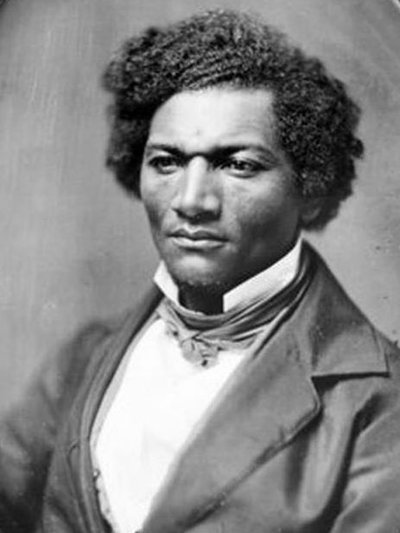By Ashley Powers
Frederick Douglass once said, “The limits of tyrants are prescribed by the endurance of those whom they oppress.” As a man who came to realize his own oppression, he recognized that he, and all of the other slaves who endured terrible injustices, had to somehow oppose the inhumane system that was American slavery. Frederick Douglass did many things to challenge slavery throughout his life. One of his most popular and recognized works was his Narrative of the Life of Frederick Douglass, an American Slave. Frederick Douglass’s narrative is an example of literary civil disobedience because it exposes the very real events of slave life and it asks questions that unenlightened people may not have thought of thus sparking a revolution in the minds of those who read it.
Certainly, slave life was a horrendous challenge to all those who endured it. It was so horrific that it had to be shielded, so that most who weren’t involved never really learned about the truth. I believe Douglass retold these events for the uneducated, for the ignorant, and for the people who never got to see the harshness. He explains them so clearly that you immediately become a witness. The story of the whipping of his Aunt Hester uses such remarkable imagery that the shield of ignorance no longer exists: “He made her get upon the stool, and tied her hands to the hook…Her arms were stretched up at their full length, so that she stood upon the ends of her toes…and after rolling up his sleeves, he commenced to lay on the heavy cowskin, and soon the warm, red blood (amid heart-rending shrieks from her, and horrid oaths from him) came dripping to the floor” (Douglass 10). Stories of events like these were common in slave life, but to people unaware of this, it was (and remains) a shocking, severe story. Douglass’s use of imagery provided a way to prompt the ignorant to wake up and witness the terrible injustices occurring in this system.
In addition to directly stating what he witnessed in his life as a slave, Douglass also shared his personal thoughts and reactions. He was more educated than other slaves slave, so his ideas were unique, too. He questions many aspects of slave life that obedient slaves might not have questioned. Most had not been exposed to anything other than compliance. The system of slavery relies on an acceptance of an inferior status. Douglass did the opposite. For example, he says, “…it is the wish of most masters to my knowledge to keep their slaves thus ignorant…The white children could tell me their ages. I could not tell why I ought to be deprived of the same privilege” (Douglass 1). He challenges the dehumanization of slavery. Thinking about his birthday implies that he is a human and that is exactly what the slave owners were trying to avoid. Also, at a young age, he begins to wonder about his future in this unjust system: “You will be free as soon as you are twenty-one, but I am a slave for life! Have not I good a right to be free as you have?” (Douglass 4). He asks himself and his white friends why the foundation of slavery is so unfair and finds no answer.
To satisfy his hungry, questioning mind, he expands his education: “I was now about twelve years old, and the thought of being a slave for life began to bear heavily upon my heart. Just about this time, I got hold of a book entitled The Columbian Orator” (Douglass 5). He explains that he read it as often as he could. Douglass states how he received his education in his narrative: the white children’s homework, his master’s wife, the shipyard, and other ways were not only mentioned, they were elaborated upon. The education of slaves was not to be tolerated, “For it is almost an unpardonable offense to teach slaves to read in this Christian country” (Douglass 4). Thinking about and questioning their status and rights (or lack thereof) was not allowed. The Narrative of the Life of Frederick Douglass, an American Slave is literary civil disobedience because it features a slave explaining how he achieved an educational, intellectual, and rhetorical power (and status) that Southern society (of the era) did not want him to enjoy.
Frederick Douglass was undoubtedly a man of great achievements. Most of them were due to his noncompliance in an unjust system. By exposing this system to those who didn’t acknowledge the injustice, questioning issues others might not have considered, and spreading his ideas and actions through his writing, he definitely challenged slavery at his time through his moral courage and powerful writing. He knew he had to oppose his tyrants and acted accordingly. Douglass observed, “If there is no struggle, there is no progress.” Douglass’s Narrative of the Life of Frederick Douglass, an American Slave is a marvelous example of literary civil disobedience.
Works Cited
Douglass, Frederick. Narrative of the Life of Frederick Douglass, an American Slave. Cambridge, MA: Belknap, 1960. Print.
Du Bois, W.E.B. Black Reconstruction in America. New York: Harcourt-Brace, 1935. Reprinted as part of the W.E.B. Du Bois Series. Henry Louis Gates, Jr. (ed.), Oxford: Oxford University Press, 2007. Print.
Image: Photograph of Frederick Douglass by Southworth & Hawes via the Onondaga Historical Association (OHA)

